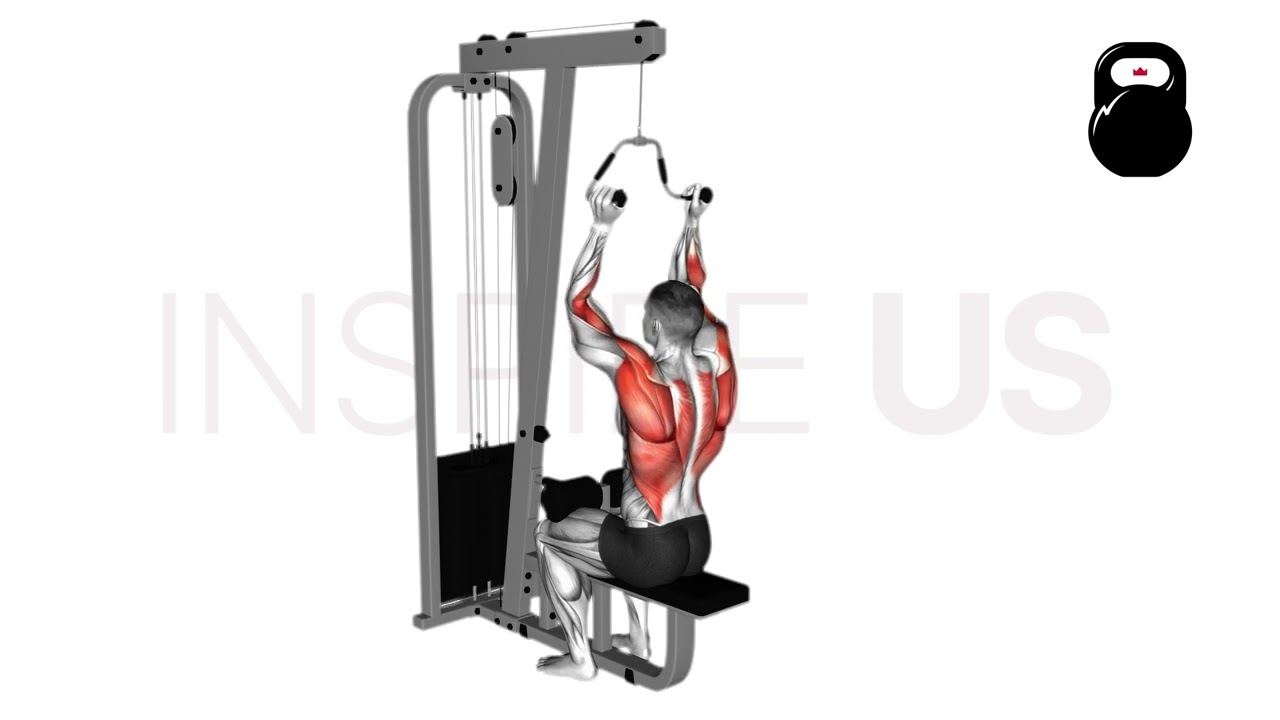Neutral Grip Lat Pulldown: Benefits, Muscles Worked, and More
With lat pulldowns, a neutral grip is adopted to create greater emphasis on the trapezius and other mid-back musculature while simultaneously reducing strain on the shoulder joint.
What are Neutral Grip Lat Pulldowns?
The neutral grip lat pulldown is a machine-based compound resistance exercise involving significant elbow flexion and scapular retraction.
Much like its conventional overhand grip counterpart, the lat pulldown is most frequently used for targeting the muscles of the mid-back through moderate volume sets.

As a machine-based compound movement, it will often fill the role of a secondary source of training stimulus to movements like the deadlift or barbell row.
Unlike the neutral grip pulldown’s conventional cousin, the use of a neutral grip somewhat reduces attention to the outer section of the lats - instead emphasizing the middle trapezius, elbow flexor muscles and other mid-back muscles like the rhomboids and teres muscles.
Apart from needing a cable or lat pulldown machine, the use of a neutral grip means lifters will need to do away with the standard pulldown bar in exchange for a V bar, close grip parallel bar or a pair of D handles.
Are Neutral Grip Lat Pulldowns the Right Exercise for You?
Neutral grip lat pulldowns are about as complex and difficult as regular lat pulldowns, meaning that even novices can easily master them without much trouble.
However, individuals who shouldn’t perform the lat pulldown are those with a history of rotator cuff issues, elbow problems or those that have previously suffered from a biceps injury.
How to do Neutral Grip Lat Pulldowns
To perform a repetition of the neutral grip lat pulldown, the lifter will first select an appropriate attachment for the cable machine so that their palms are facing each other as they grip the handle. Generally, a hand position closer than shoulder-width apart is ideal.
Drawing the handle downwards and seating themselves securely beneath the pads, the lifter then leans their torso backwards ever so slightly, rotates their shoulders into a neutral position and begins to pull by retracting their scapula.
As the handle is pulled beneath the lifter’s chin, they will squeeze their shoulder blades together, ensuring that the elbows are pulling parallel to the sides of the torso and avoiding any flaring.
Once the handle is around the same elevation as the clavicles, the lifter allows the resistance of the cable to slowly pull their arms back overhead, maintaining tension in their back muscles as they do so.
When the arms are fully extended upwards, the repetition is considered to be complete.
Sets and Reps Recommendation:
As they most often play the role of a secondary compound movement, neutral grip lat pulldowns serve better in the middle repetition range while performed with a moderate amount of weight.
Unless otherwise needed by your programming, try aiming for 2-3 sets of 8-16 repetitions.
What Muscles do Neutral Grip Lat Pulldowns Work?
Neutral grip lat pulldowns are a compound exercise, essentially meaning that multiple muscles are targeted over the course of its movement pattern.
In order to identify which muscles benefit most from the exercise, they are divided according to the manner in which they contract.
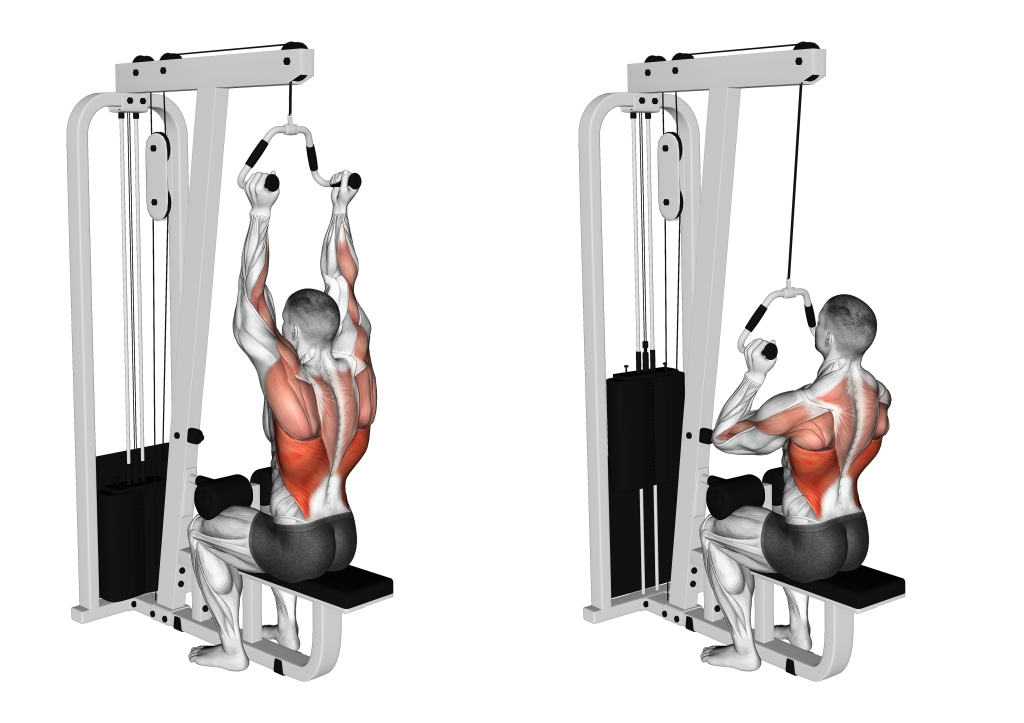
With dynamic contraction, the muscle is referred to as a “mover” or “mobilizer” muscle - signaling that it plays a vital role in the exercise and thereby reaps the most benefit as well.
In contrast, isometric or static contraction marks a muscle as a “stabilizer”, where it plays a supportive role but does not necessarily respond to the training as much as the aforementioned mover muscles.
Mover Muscles
During a repetition of neutral grip lat pulldowns, the muscles of the latissimus dorsi and the trapezius play the most significant role as primary movers.
Alongside these are the secondary mover muscles of the rhomboids, infraspinatus as well as the teres minor and major.
Furthermore, during certain portions of the ROM, the brachialis, brachioradialis and biceps brachii will contract in some small dynamic capacity as well.
Each of these muscle groups contracts in both a concentric and eccentric manner respectively, resulting in a greater incidence of microtears of the muscle fibers - leading to greater hypertrophy as well.
Stabilizer Muscles
Apart from the mover muscles, the posterior deltoid head, pectoral muscles and the three major elbow flexor muscles are also contracted in a static capacity as well.
As the name implies, these muscles are meant to solely stabilize the joints involved in the overall exercise. Because of this somewhat less dynamic role, less strain on the stabilizer muscles occurs and thereby comparatively less strength and mass development as well.
What are the Benefits of Doing Lat Pulldowns With a Neutral Grip?
Performing lat pulldowns with a neutral grip shifts the emphasis of the exercise and reduces strain on certain joints in the upper body.
Although not as effective at targeting the outer section of the lats, the many benefits it offers can more than compensate.
Excellent for Building Mass in the Lats and Mid-Back
The main benefit to neutral grip lat pulldowns lies in its capacity to develop the muscles of the mid-back to a highly intense degree.
Like many other close grip pulling movements, the rotator and scapular muscles (traps, rhomboids etc.) are all subjected to a significant level of exertion, especially when a neutral grip is involved so that less external shoulder rotation is present.
Combined with the constant time under tension and relatively large range of motion, muscular hypertrophy is all but inevitable in the muscles of the middle back.
Of course, to get the best results, aim for a moderate or high number of repetitions per set alongside slow and controlled eccentric contractions.
Safer for Shoulder and Wrists
Lifters may occasionally find that - when performing lat pulldowns with a supinated or pronated grip - they experience irritation in their shoulders and wrists.
While this can largely be mitigated with mobility work and proper technique, one alternative solution is to simply perform the exercise with a neutral grip instead.
With the use of a neutral grip, force is more evenly distributed through the wrists and forearms, especially in regards to rotational force or torque that may be present as a result of poor adjustment and positioning.
Likewise, a neutral grip can aid in creating a more comfortable humerus-shoulder joint angle if a close or moderate hand width is also adopted.
Although the neutral grip variant of lat pulldown is indeed more comfortable as far as wrists and shoulders are concerned, remember that training through symptoms of an injury is generally considered a poor idea. Speak to a physical therapist prior to returning to training if you suspect you’ve been injured.
Reinforces Scapular Retraction, External Shoulder Rotation and Elbow Flexion
Because the main muscles targeted by neutral grip lat pulldowns are directly responsible for biomechanical actions like retracting the scapula, externally rotating the shoulders and bending the elbows - it should be no surprise that the exercise reinforces these mechanics as well.
Lifters with uneven shoulder blade retraction, difficulty squaring their shoulders outwards or who present with unstable elbow flexion can all correct these issues with the neutral grip lat pulldown.
With regular performance, the exercise will lead to not only stronger and more stable biomechanics, but also allow for a greater range of action due to its large range of motion helping to mobilize the joints involved.
Helps Correct Poor Posture of the Upper Back
Muscle groups like the trapezius and posterior deltoid head are partially responsible for maintaining correct posture along the upper section of the trunk. They aid with setting the shoulders and scapula in the right position, as well as ensuring the cervical section of the spine is appropriately aligned.
When these muscles are weak or otherwise present with an imbalance, posture of the upper body is often one among the most immediately visible symptoms.
Fortunately, many cases of poor posture as a result of muscular weakness can be corrected with simple resistance exercises like the neutral grip lat pulldown. Strengthening such muscles in both a dynamic and static sense will allow them to maintain proper upper trunk posture more effectively, and for longer periods.
Of course, remember to first speak to a medical professional prior to attempting to rehabilitate poor upper back posture yourself. Certain underlying issues related to poor posture can in fact be exacerbated by exercise, rather than helped by it.
Carryover to Pull-Ups, Upright Rows and Other Vertical Pulling Exercises
As a result of both improved technique and actual muscular strength development, neutral grip lat pulldowns can be directly used to improve the lifter’s performance in similar vertical pulling exercises.
Most notably, pull-ups and their subsequent chin-up counterpart are directly made far easier by including several sets of neutral grip pull-ups into weekly training programming.
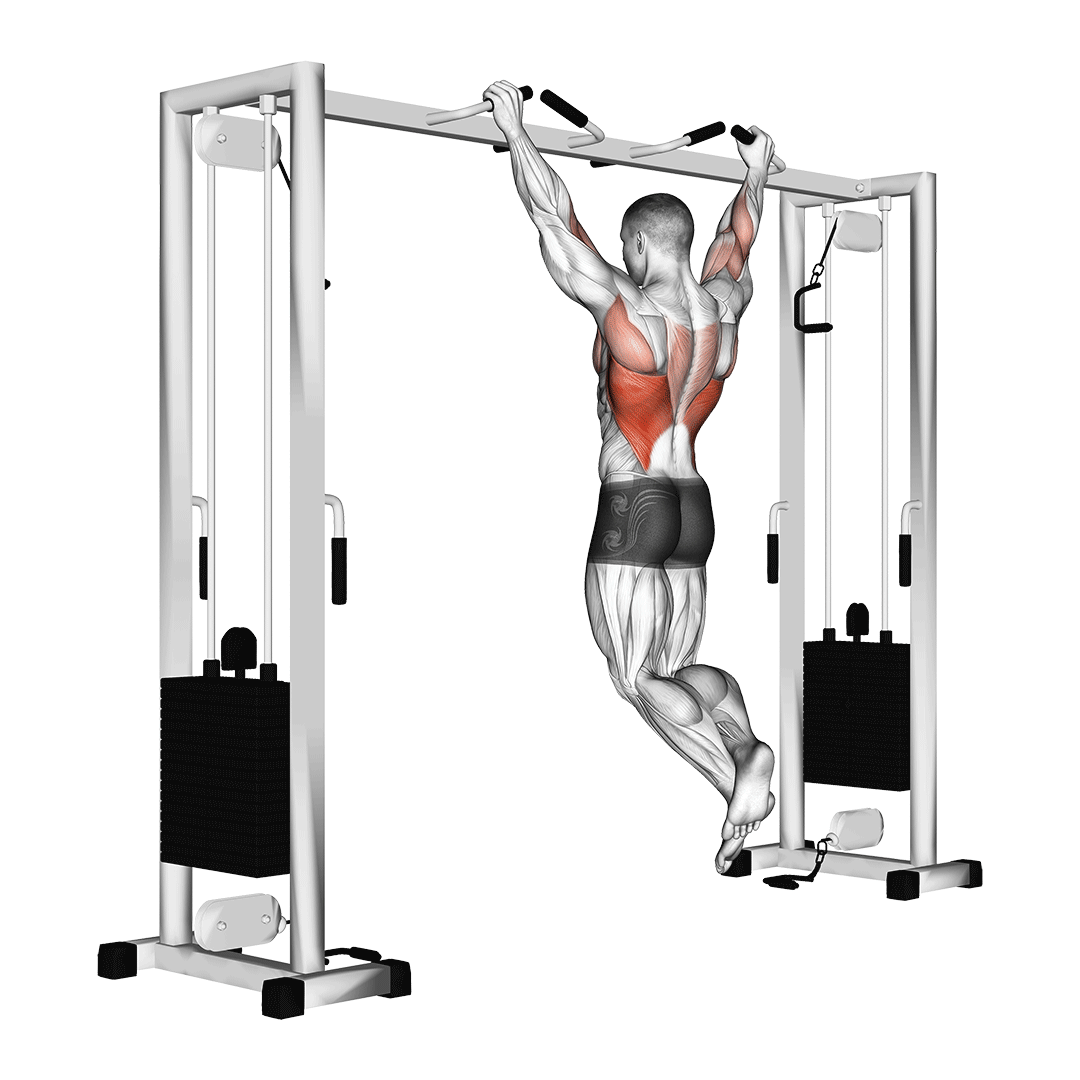
Other exercises that may be indirectly improved by pulldowns are exercises like upright rows and inverted rows, where either a similar movement pattern is involved or similar muscle groups are worked within the same range of motion.
Somewhat Greater Loading Capacity Than With Pronated Pulldowns
The more common variation of lat pulldown involves a pronated (overhand) grip being used, meaning that the elbow flexor muscles are utilized to a far lesser degree.
While this is indeed great for targeting the lats to a greater extent, it also means that less overall pulling force is applied to the bar - therein reducing how much weight can be moved for the same level of exertion.
Though it is true that actual weight loaded is not necessary for maximizing muscular development, those wishing to truly focus on strength development may see benefit in switching to a neutral grip instead.
Can be Adjusted for Different Emphasis
The neutral grip lat pulldown may be further specified by altering the width of the hands themselves.
While still a neutral grip pulldown, swapping to an even closer grip or one as wide as shoulder-width apart can alter which specific mid-back muscles are emphasized the most.
Generally, the wider the grip, the more the outer section of the latissimus dorsi and the posterior deltoid head are recruited, whereas the elbow flexor muscles are targeted to a lesser degree.
Apart from altering grip width, the movement may also be performed one-handed or otherwise with varying trunk positions, ranging from simply standing to performing the exercise chest-supported while atop an incline bench.
Common Neutral Lat Pulldown Mistakes to Avoid
While considered one of the safest forms of lat pulldown, avoid the following mistakes so as to get the most out of the exercise.
Rocking the Torso
While leaning the torso slightly backwards can aid in engaging the mid-back muscles better, avoid actively swinging the body as the bar is pulled downwards.
Doing so can place greater stress on the lower back and otherwise draw emphasis away from the right muscle groups - leading to poorer development as a whole.
As much as possible, lifters should aim to keep their torso stationary throughout the entire lat pulldown set. Drive the glutes into the seat and make full use of the machine’s securing pads atop the thighs if available.
Pulling With the Arms
Although the neutral grip lat pulldown does involve the elbow flexor muscles to a certain extent, it is important to remember that the exercise is primarily a back-focused one.
Initiate the pull by retracting the scapula and contracting the latissimus dorsi muscles, rather than solely relying on the biceps and brachialis muscles to sustain the downward pulling motion.
Solely pulling with the arms can lead to poor form, reduced hypertrophic response in the back muscles and an overall less effective exercise in totality.
Short Range of Motion
As is also a common mistake with most other exercises, failing to complete a full range of motion can lead to poor muscular development, sticking points, instability and even whole muscle groups being eliminated from the recruitment set.
In order to ensure that you get the most out of the neutral grip lat pulldown (and don’t develop any physiological problems), ensure that each repetition begins and ends with the arms extended upwards, elbows nearly locked out.
Apart from ensuring this terminal point is always reached, ensure that the highest point of the repetition also involves the upper arms being at the least parallel with the sides of the torso, and the scapula being fully retracted behind the body.
Flaring the Elbows
As much as they are able, the lifter should aim to keep their elbows pointed either downwards or angled towards the sides, rather than immediately in a lateral direction.
Pulling downwards with the upper arms parallel to the shoulders can increase friction within the shoulder joint itself, leading to irritation and injuries if the elbow flaring is particularly severe or repetitive.
A good cue to avoid making this particular form of mistake is to imagine drawing the elbows besides the body, rather than the handle towards the chest. This helps visualize the correct humeral angle and degree of elbow flexion needed.
Failing to Engage Scapula
Lifters may occasionally make the mistake of pulling the handle downwards without necessarily squeezing their shoulder blades together near the apex of the movement.
Without this vital aspect of the exercise, muscles like the trapezius will be utilized to a lesser degree - leading to poorer overall development and a weaker pull as well.
As the handle begins to cross the face and the arms bend alongside the body, the scapula should also be retracting in tandem - ending with full scapular engagement as the handle is drawn beneath the chin.
Alternatives and Variations of the Neutral Grip Lat Pulldown
If the neutral grip lat pulldown uses the wrong angle of resistance - or if you want greater emphasis on specific muscle groups - try a substitute alternative or variation exercise out.
Neutral Grip Cable Rows
Neutral grip cable rows are the direct horizontal pulling counterpart to neutral grip lat pulldowns.
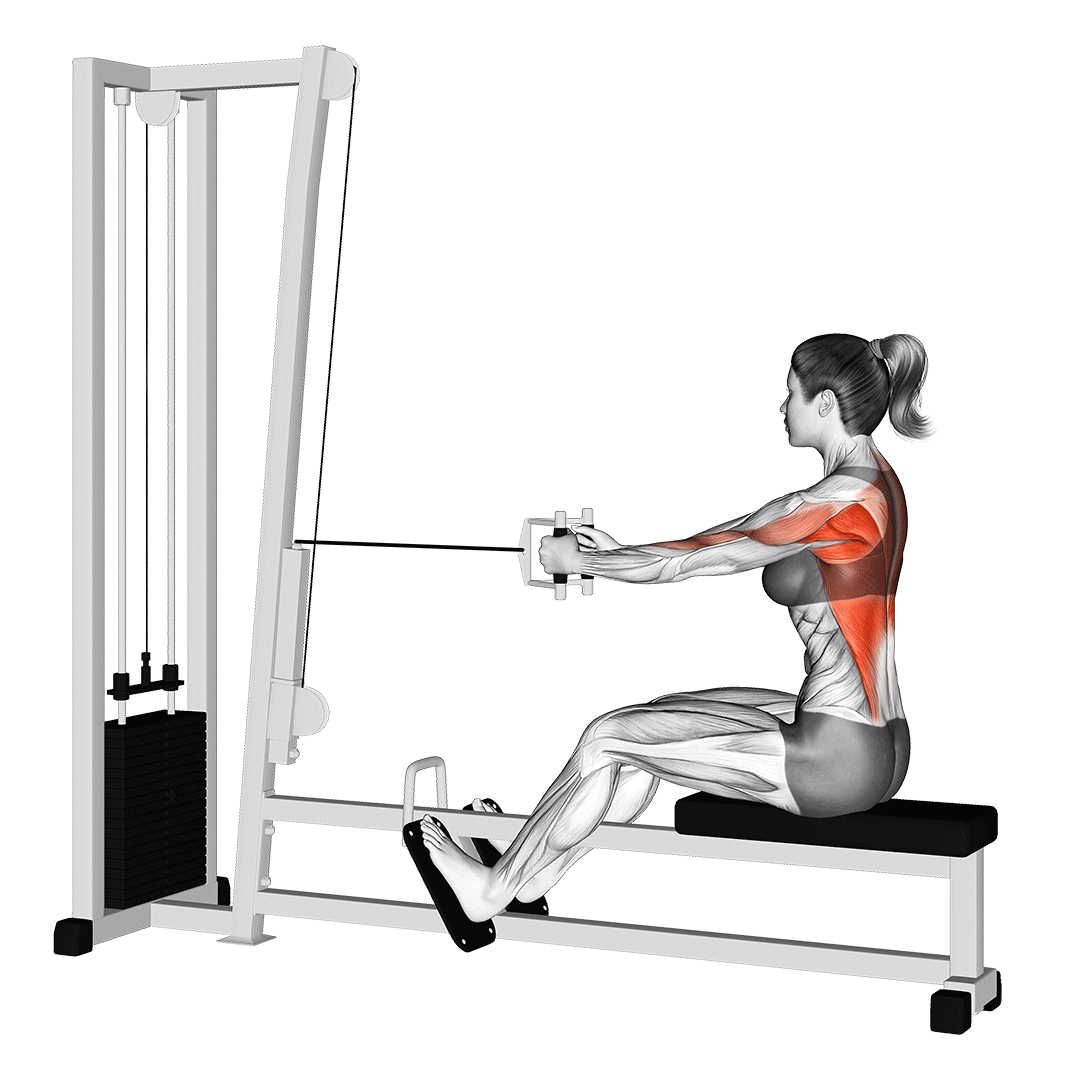
Rather than pulling a handle downwards along a vertical plane, the lifter instead seats themselves and pulls the handle towards their sternum along a horizontal one.
Although seemingly a small change, performing rows over pulldowns allows for even greater emphasis on the mid-back muscles and a larger loading capacity.
Neutral Grip Pull-Ups
For a freer and more bodyweight geared alternative, the lifter can instead perform pull-ups with the use of a neutral grip.
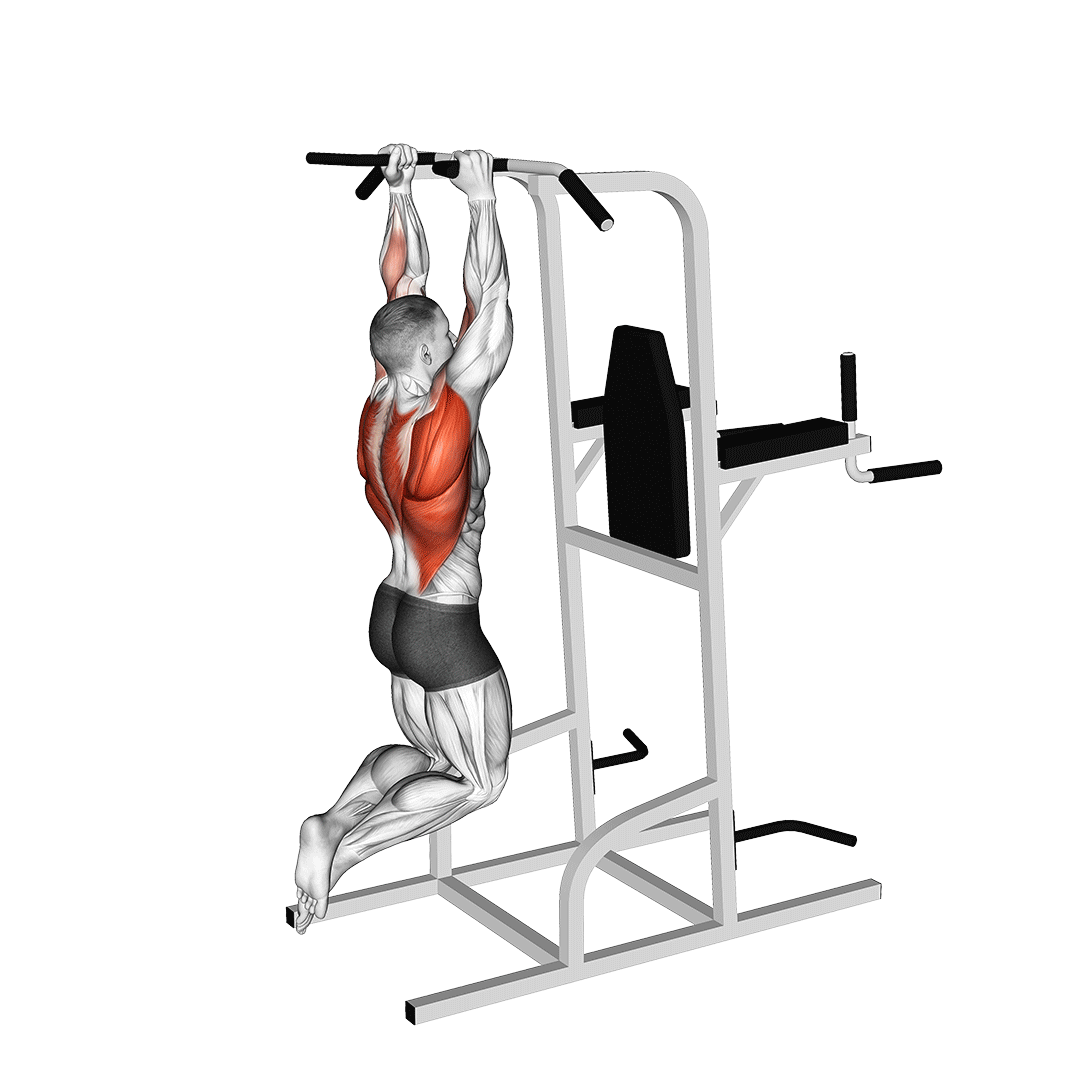
Doing so targets much the same muscle groups in similar ranges of motion, but will also have the benefit of even greater emphasis on the elbow flexor muscles - as well as the inclusion of otherwise lesser trained muscles like the anterior deltoids and abdominals.
Of course, if swapping out with neutral grip pull-ups, the lifter will lose the safety, adjustability and variable intensity inherent to machine-based exercises. Program accordingly.
Wide Neutral Grip Pulldowns
As a simple but effective modification of the neutral grip lat pulldown, selecting a wider grip attachment allows for greater emphasis on the latissimus dorsi while still retaining a similar level of mid-back muscle group activation.
The sole disadvantage to doing so is reduced elbow flexor involvement on account of a more disadvantageous position.
Frequently Asked Questions (FAQ)
Is a Neutral Grip Better for Lat Pulldowns?
In certain aspects - yes. Adopting a neutral grip allows for greater emphasis on the muscles of the middle back, as well as greater comfort as far as the wrists and shoulder joints are concerned.
What is the Difference Between a Neutral Grip and Pronated Grip Lat Pulldown?
Neutral grip lat pulldowns target the latissimus dorsi to a somewhat lesser degree, but emphasize the trapezius and elbow flexors more. In addition, the use of a neutral grip is considered safer for the wrists and shoulder joints.
How do I Activate Lats During Pulldowns?
To properly activate the lats, the scapula must be partially depressed so that the muscle may swing outwards slightly at the start of the pull. As the handle is drawn downwards, the scapula should retract as the lifter “squeezes” their armpit.
References
1. Leslie, Kelly & Comfort, Paul. (2013). The Effect of Grip Width and Hand Orientation on Muscle Activity During Pull-ups and the Lat Pull-down. Strength and Conditioning Journal. 35. 75-78. 10.1519/SSC.0b013e318282120e.
2. Sperandei, Sandro & Barros, Marcos & Silveira-Júnior, Paulo & Oliveira, Carlos. (2009). Electromyographic Analysis of Three Different Types of Lat Pull-Down. Journal of strength and conditioning research / National Strength & Conditioning Association. 23. 2033-8. 10.1519/JSC.0b013e3181b8d30a.

